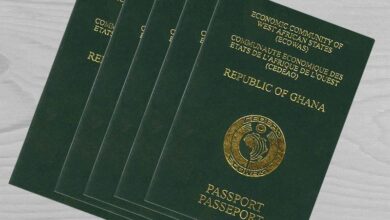What Customers Are Really Saying

If you‚Äôve ever leased a car, you know the drill: a few years of easy monthly payments, no big repair worries, and that satisfying new-car smell. But time goes by fast, and you suddenly wake up at the end of your lease.¬Ý
Suddenly, it‚Äôs time for inspections, return appointments, and a lot of fine print that no one really explains when you first sign. And that‚Äôs when most drivers discover whether their leasing company truly treats customers right.¬Ý
After reading through countless lease end department reviews, one thing becomes obvious: people‚Äôs experiences vary wildly. But what are people really saying, and how can you avoid their biggest frustrations?¬Ý¬Ý
Let‚Äôs talk about what customers share, what tends to go wrong, and how you can finish your lease with a smile instead of a headache.¬Ý
The Stories Behind the Stars¬Ý
Scroll through any customer review section, and you‚Äôll notice the extremes. On one end, there‚Äôs the person who had the perfect experience: quick inspection, fair charges, friendly staff.¬Ý
On the other, you‚Äôll find long rants about being overbilled for minor scratches or waiting weeks to get paperwork sorted. The middle ground? That‚Äôs often where the real insights hide.¬Ý
Many happy customers point out that their lease-end process went smoothly because they stayed on top of things early. They scheduled their inspection in advance, read over their lease terms again, and fixed minor wear-and-tear before returning the vehicle. So, the people giving good reviews aren‚Äôt necessarily lucky; they‚Äôre prepared.¬Ý
Meanwhile, the harshest reviews often stem from miscommunication. You may assume light interior stains are ‚Äúnormal wear,‚Äù only to face a cleaning charge later.¬Ý
Or you may think the dealership handled the final report automatically, but it never went through. That leads to overdue notices and confusion. These incidents are not just one-time events; they show how easily expectations and procedures can get out of sync.¬Ý
Hidden Fees and Other Surprises¬Ý
One of the biggest complaints in lease end department reviews involves end-of-lease charges that catch people off guard:¬Ý
- Fees for excessive mileage
- Scratches
- Dents
- Minor interior damage that seems harmless.¬Ý
Drivers often say they wish someone had told them exactly what counts as ‚Äúexcessive.‚Äù¬Ý
For example, a minor scuff on a bumper might not seem like a big deal to you, but leasing companies tend to have strict inspection checklists. If an inspector determines the damage exceeds normal wear, you‚Äôll be charged standard repair costs, which may be higher than an ordinary body shop‚Äôs rates.¬Ý
Some drivers also mention ‚Äúdisposition fees,‚Äù which are simply the costs leasing companies charge for processing and reselling the returned vehicle. It‚Äôs not a scam; it‚Äôs written in your contract. But many people overlook it.¬Ý
Others mention delays in receiving their final statement or refund, which can stretch out the process and create unnecessary doubt. If there‚Äôs one takeaway, it‚Äôs to keep every document until your account officially closes.¬Ý
Communication Makes or Breaks Everything¬Ý
When reading through customer stories, a clear theme appears: good communication leads to good reviews.¬Ý¬Ý
Drivers who spoke with polite, responsive representatives felt confident at every stage. They knew what to expect, how to prepare, and who to call if something seemed off.¬Ý
In contrast, poor communication often turned minor issues into major headaches. Some complaints reviewers had:¬Ý
- Being bounced between departments
- Their emails went unanswered for weeks
When the end of your lease already feels like a test of patience, the lack of guidance only adds fuel to the fire.¬Ý
It‚Äôs not all bad news, though. Several major automakers have been improving their customer support. They offer online tools that explain lease-end steps or let you schedule inspections digitally. Keeping customers informed and calm during the process helps.¬Ý
¬ÝWhat Customers Wish They Knew Earlier¬Ý
After reading enough of these stories, certain regrets repeat over and over. People wish they‚Äôd documented more, read more, and planned ahead. Fortunately, those lessons can help anyone preparing for their own lease return.¬Ý
Here‚Äôs what most drivers recommend:¬Ý
- Get your lease inspection done early, ideally a month before your return date. That gives you time to fix anything major.
- Read your contract again. Look for sections about “wear and tear,” “mileage penalties,” and “disposition charges.”
- Keep maintenance records. Showing proof of routine service sometimes helps you fight certain fees.
- Take photos of your car’s condition before drop-off. It’s your best protection if something gets misreported later.
- Ask questions until everything makes sense. The more you understand now, the less you stress later.
These steps save time, money, and a lot of frustration. Customers who follow them often leave glowing reviews because they know what to expect.¬Ý
What This Means for Your Next Lease¬Ý
If your own lease is nearing its end, think of these stories as your roadmap. Take a few hours to go over your contract again, check your mileage, and inspect your car carefully. A thorough cleaning inside and out creates a better first impression during inspection.¬Ý
And when it‚Äôs time to visit your lease end department, be confident. Ask questions, take notes, and get everything in writing. Most importantly, remember that you‚Äôre in control of how smoothly things go.¬Ý




